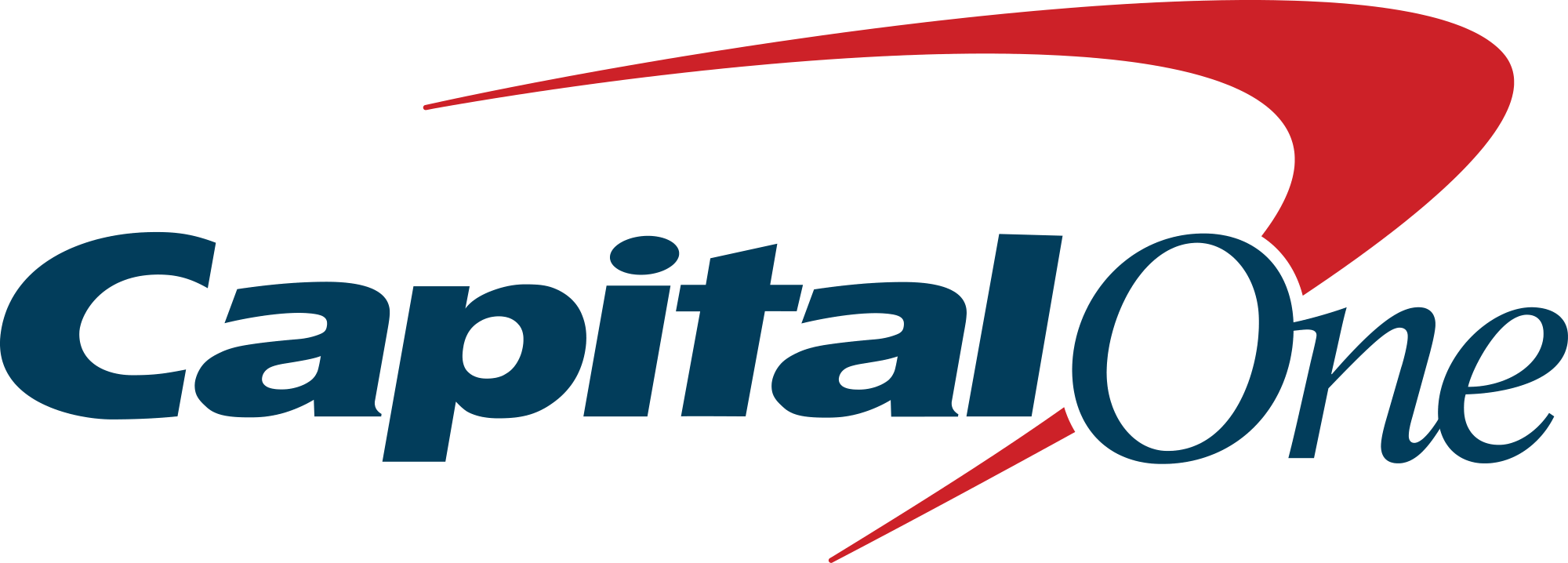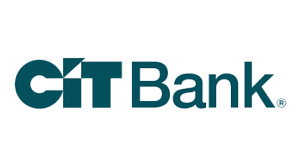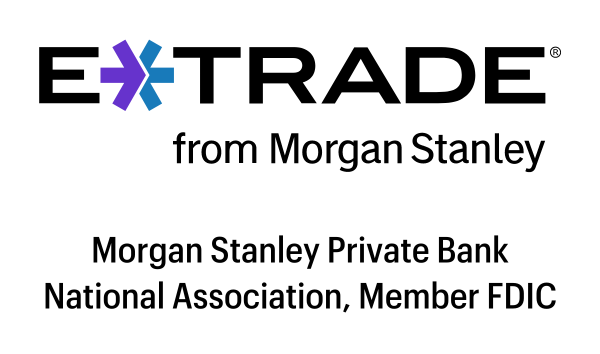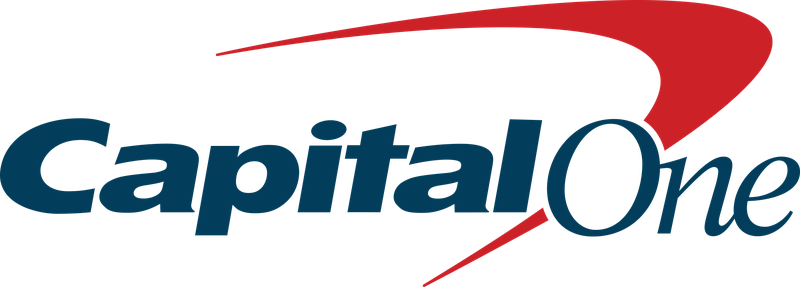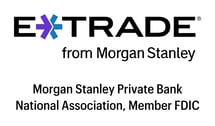Joint savings accounts link the finances of two or more people and help them reach savings goals twice as fast. Great for couples sharing their finances, parents teaching their kids about saving money, or any pair who want to collaborate with their money, these accounts are a safe place for multiple parties to store cash.
The best joint savings accounts have zero or low fees, competitive APYs, and flexible withdrawal options. If you're ready to link up your savings with someone, below are our top picks for joint savings accounts.
3 featured joint savings accounts
Here’s a quick list of some of the best joint savings accounts, backed by our expert research and testing:
- SoFi Checking and Savings (Member FDIC): up to $300 bonus and up to 4.60% APY (annual percentage yield)
- Capital One 360 Performance Savings (Member FDIC): 4.25% APY
- CIT Platinum Savings (Member FDIC): 5.05% APY for balances of $5,000 or more
Show Best Offers Available in
| Offer | APY | Minimum to Earn APY | Rating | Promotion | Next Steps |
|---|---|---|---|---|---|
|
SoFi Checking and Savings
Member FDIC.
Rating image, 4.75 out of 5 stars.
4.75/5
Our ratings are based on a 5 star scale.
5 stars equals Best.
4 stars equals Excellent.
3 stars equals Good.
2 stars equals Fair.
1 star equals Poor.
We want your money to work harder for you. Which is why our ratings are biased toward offers that deliver versatility while cutting out-of-pocket costs.
|
up to 4.60%
Rate info
You can earn the maximum APY by having Direct Deposit (no minimum amount required) or by making $5,000 or more in Qualifying Deposits every 30 days. See SoFi Checking and Savings rate sheet at: https://www.sofi.com/legal/banking-rate-sheet.
Min. to earn: $0
|
Rating image, 4.75 out of 5 stars.
4.75/5
Our ratings are based on a 5 star scale.
5 stars equals Best.
4 stars equals Excellent.
3 stars equals Good.
2 stars equals Fair.
1 star equals Poor.
We want your money to work harder for you. Which is why our ratings are biased toward offers that deliver versatility while cutting out-of-pocket costs.
|
$0
|
New customers can earn up to a $300 bonus with qualifying direct deposits!
|
Offer Alert
New customers can earn up to a $300 bonus with qualifying direct deposits!
|
|
Capital One 360 Performance Savings
Member FDIC.
Rating image, 4.75 out of 5 stars.
4.75/5
Our ratings are based on a 5 star scale.
5 stars equals Best.
4 stars equals Excellent.
3 stars equals Good.
2 stars equals Fair.
1 star equals Poor.
We want your money to work harder for you. Which is why our ratings are biased toward offers that deliver versatility while cutting out-of-pocket costs.
|
4.25%
Rate info
See Capital One website for most up-to-date rates. Advertised Annual Percentage Yield (APY) is variable and accurate as of April 11, 2024. Rates are subject to change at any time before or after account opening.
Min. to earn: $0
|
Rating image, 4.75 out of 5 stars.
4.75/5
Our ratings are based on a 5 star scale.
5 stars equals Best.
4 stars equals Excellent.
3 stars equals Good.
2 stars equals Fair.
1 star equals Poor.
We want your money to work harder for you. Which is why our ratings are biased toward offers that deliver versatility while cutting out-of-pocket costs.
|
$0
|
N/A
|
|
|
CIT Platinum Savings
Member FDIC.
Rating image, 4.75 out of 5 stars.
4.75/5
Our ratings are based on a 5 star scale.
5 stars equals Best.
4 stars equals Excellent.
3 stars equals Good.
2 stars equals Fair.
1 star equals Poor.
We want your money to work harder for you. Which is why our ratings are biased toward offers that deliver versatility while cutting out-of-pocket costs.
|
5.05% APY for balances of $5,000 or more
Rate info
5.05% APY for balances of $5,000 or more; otherwise, 0.25% APY
Min. to earn: $100 to open account, $5,000 for max APY
|
Rating image, 4.75 out of 5 stars.
4.75/5
Our ratings are based on a 5 star scale.
5 stars equals Best.
4 stars equals Excellent.
3 stars equals Good.
2 stars equals Fair.
1 star equals Poor.
We want your money to work harder for you. Which is why our ratings are biased toward offers that deliver versatility while cutting out-of-pocket costs.
|
$100 to open account, $5,000 for max APY
|
N/A
|
|
|
LendingClub High-Yield Savings
Member FDIC.
Rating image, 4.50 out of 5 stars.
4.50/5
Our ratings are based on a 5 star scale.
5 stars equals Best.
4 stars equals Excellent.
3 stars equals Good.
2 stars equals Fair.
1 star equals Poor.
We want your money to work harder for you. Which is why our ratings are biased toward offers that deliver versatility while cutting out-of-pocket costs.
|
5.00%
Min. to earn: $0
|
Rating image, 4.50 out of 5 stars.
4.50/5
Our ratings are based on a 5 star scale.
5 stars equals Best.
4 stars equals Excellent.
3 stars equals Good.
2 stars equals Fair.
1 star equals Poor.
We want your money to work harder for you. Which is why our ratings are biased toward offers that deliver versatility while cutting out-of-pocket costs.
|
$0
|
N/A
|
|
|
E*TRADE Premium Savings Account
Member FDIC.
Rating image, 4.50 out of 5 stars.
4.50/5
Our ratings are based on a 5 star scale.
5 stars equals Best.
4 stars equals Excellent.
3 stars equals Good.
2 stars equals Fair.
1 star equals Poor.
We want your money to work harder for you. Which is why our ratings are biased toward offers that deliver versatility while cutting out-of-pocket costs.
|
4.25%
Min. to earn: $0.01
|
Rating image, 4.50 out of 5 stars.
4.50/5
Our ratings are based on a 5 star scale.
5 stars equals Best.
4 stars equals Excellent.
3 stars equals Good.
2 stars equals Fair.
1 star equals Poor.
We want your money to work harder for you. Which is why our ratings are biased toward offers that deliver versatility while cutting out-of-pocket costs.
|
$0.01
|
N/A
|
|
|
EverBank Performance℠ Savings
Member FDIC.
Rating image, 5.00 out of 5 stars.
5.00/5
Our ratings are based on a 5 star scale.
5 stars equals Best.
4 stars equals Excellent.
3 stars equals Good.
2 stars equals Fair.
1 star equals Poor.
We want your money to work harder for you. Which is why our ratings are biased toward offers that deliver versatility while cutting out-of-pocket costs.
|
5.15%
Min. to earn: $0
|
Rating image, 5.00 out of 5 stars.
5.00/5
Our ratings are based on a 5 star scale.
5 stars equals Best.
4 stars equals Excellent.
3 stars equals Good.
2 stars equals Fair.
1 star equals Poor.
We want your money to work harder for you. Which is why our ratings are biased toward offers that deliver versatility while cutting out-of-pocket costs.
|
$0
|
N/A
|
|
|
Member FDIC.
Rating image, 4.75 out of 5 stars.
4.75/5
Our ratings are based on a 5 star scale.
5 stars equals Best.
4 stars equals Excellent.
3 stars equals Good.
2 stars equals Fair.
1 star equals Poor.
We want your money to work harder for you. Which is why our ratings are biased toward offers that deliver versatility while cutting out-of-pocket costs.
|
4.25%
Min. to earn: $0
|
Rating image, 4.75 out of 5 stars.
4.75/5
Our ratings are based on a 5 star scale.
5 stars equals Best.
4 stars equals Excellent.
3 stars equals Good.
2 stars equals Fair.
1 star equals Poor.
We want your money to work harder for you. Which is why our ratings are biased toward offers that deliver versatility while cutting out-of-pocket costs.
|
$0
|
N/A
|
|
|
Member FDIC.
Rating image, 5.00 out of 5 stars.
5.00/5
Our ratings are based on a 5 star scale.
5 stars equals Best.
4 stars equals Excellent.
3 stars equals Good.
2 stars equals Fair.
1 star equals Poor.
We want your money to work harder for you. Which is why our ratings are biased toward offers that deliver versatility while cutting out-of-pocket costs.
|
2.5%
Min. to earn: $0
|
Rating image, 5.00 out of 5 stars.
5.00/5
Our ratings are based on a 5 star scale.
5 stars equals Best.
4 stars equals Excellent.
3 stars equals Good.
2 stars equals Fair.
1 star equals Poor.
We want your money to work harder for you. Which is why our ratings are biased toward offers that deliver versatility while cutting out-of-pocket costs.
|
$0
|
N/A
|
Show Best Offers Available in
SoFi Checking and Savings

Offer Alert
- Competitive APY on both Savings and Checking
- No account fees
- Welcome bonus up to $300 (direct deposit required)
- Early access to direct deposits
- Tools to help you track savings goals
- Unlimited number of external transfers (up to daily transaction limits)
- ATM access
- FDIC insured (up to $2M with opt-in to SoFi Insured Deposit Program)
- Combo account only; no stand-alone savings or checking
- Maximum Savings APY requires direct deposit
- Overdraft protection requires monthly direct deposit minimum
- No branch access; online only
Perhaps no account is more fitting for joint ownership than a joint savings and checking account. Indeed, this hybrid account by SoFi combines the best of both accounts, with a high APY and a cash back debit card. Better yet, the account has no fees and boasts a lucrative cash bonus to give your savings a little boost.
Capital One 360 Performance Savings

- Competitive APY
- Branch access (if you live near one)
- No account fees
- Comfort of a well-known brand and reputation
- 24/7 customer support
- FDIC insured
- No ATM access
Most joint savings accounts leave you with a dilemma: You can either have an exciting APY (but limited access to your money) or greater flexibility with cash (but a sad savings rate). This account by Capital One, however, does a great job of combining these two perks. The 360 Performance Savings has a decently high APY, plus gives you the option of accessing funds at Capital One Cafes.
CIT Platinum Savings
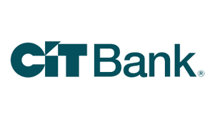
- Competitive APY
- No account fees
- Unlimited number of external transfers (up to daily transaction limits)
- 24/7 customer support
- FDIC insured
- Balance requirement for maximum APY
- No ATM access
- No branch access; online only
For those looking to earn the most interest possible, the CIT Platinum Savings should be at the top of your list. This account has an incredibly high APY for balances of $5,000 or more. The account has no fees, plus equips joint owners with a robust mobile app for easy account access.
LendingClub High-Yield Savings

- Competitive APY
- No monthly account fee
- ATM access
- Unlimited number of external transfers (up to daily transaction limits)
- FDIC insured
- ACH outbound transfers limited to $10,000 per day for some accounts
- No branch access; online only
The LendingClub High-Yield Savings is one of the best online accounts for joint ownership. The APY is competitive, the account has no fees or minimums to maintain, and you even get an ATM card to withdraw cash at ATMs. The combination of high APY and withdrawal flexibility make this account a rare gem among high-yield savings offerings.
EverBank Performance℠ Savings

- Competitive APY
- No monthly account fee
- Branch access (if you live near one)
- FDIC insured
- Same-day ACH transfers
- Free wire transfers (incoming only)
- ATM access only available via optional checking account
- Branches only in Florida
EverBank Performance Savings has one of the top APYs on our savings account radar, especially among accounts that require no minimum deposit. There are no maintenance fees, as well as multiple options to make deposits into the account. And for customers who live in Florida, there are several physical locations to visit.
Discover® Online Savings

- Competitive APY
- No account fees
- Comfort of a well-known brand and reputation
- 24/7 customer support
- FDIC insured
- No ATM access
- No branch access; online only
Discover® Online Savings is a great pick for those who want a high APY and top-notch mobile app, but prefer to bank with a well-known brand. While it's not exactly the highest rate at every point in time, you can feel good that you’ll likely be earning a near-top-of-market rate for a while to come.
Capital One Kids Savings Account

- High APY
- No minimum to earn APY
- No fees
- No minimum age requirement
- Easy to set up automatic savings
- Limited education features
- Won't automatically convert to a regular savings account when child turns 18
If you're looking to save money with your kids, the Capital One Kids Savings account is a great option. This free account has a decent APY, no minimums to maintain, and can easily link to another Capital One account.
What is a joint savings account?
A joint savings account is one that assigns ownership to more than one person and lets them deposit and withdraw savings freely. Typically, these joint accounts have one routing number, one monthly fee (if it has one), and one APY. That said, account holders could have different PINs for ATM cards or different login information for the same online account.
Sometimes, banks will offer joint savings accounts as its own product. But more often than not you'll open a regular savings account and choose to add joint owners in the beginning of your application. Most banks will even let you add a joint owner to an account you opened by yourself.
How to choose the best joint savings account
Choosing the best joint savings account will come down to how much branch access you want, whether you want an ATM card, and how much interest you want to earn on your savings. With that in mind, here are some important factors to consider when choosing your account:
- Annual percentage yield (APY): The APY on your savings account is the total interest it will earn over a 12-month period. Nearly all savings accounts have APYs, but not all have competitive rates. Typically, online high-yield savings accounts will have the best rates, while those at big national banks will pay out the least. Some joint accounts even have tiered APY systems and will assign you a higher rate when your savings surpasses a certain threshold.
- Monthly maintenance fees: Service fees are common with accounts held at brick-and-mortar banks, but even some online accounts will impose them. The best joint accounts will impose no fees or give you easy ways to waive them.
- Online vs. brick and mortar: Brick-and-mortar banks have in-person services and can make withdrawing and depositing cash super convenient. Online banks, on the other hand, limit access to your funds, but often give you a higher savings rate and will waive fees.
- ATM network: Some joint savings accounts will come with ATM cards that let you withdraw cash at fee-free ATMs. This feature is more common with accounts held at brick-and-mortar banks, though some online accounts -- like the LendingClub High-Yield Savings account -- also come with their own cards.
- Welcome offers: Banks occasionally give welcome bonuses to new account holders. Typically, you have to satisfy some criteria, like setup direct deposit or maintain a minimum balance for a certain period. Depending on how high the bonus is you may have to report it on your taxes.
How to open a joint savings account
The application process for opening a joint account is similar to personal accounts, except you'll select the joint account option during signup, then enter the personal information for all account owners, likely:
- Address
- Date of birth
- Social Security number
If you're signing up at a brick-and-mortar location, both owners should be present to fill out their respective application forms.
Pros and cons of opening a joint savings account
Pros
- Hit savings goals faster: Combining your savings could accelerate big financial goals, buying a car or house.
- Co-monitor your spending: Joint accounts bring more transparency, which could help both owners curb unnecessary spending. Depending on the account's withdrawal restrictions, this could also mean leaving more money in your savings each month.
- More FDIC insurance: When two people co-own a bank account, they each have $250,000 in FDIC insurance. That means the account has a total insurance limit of $500,000.
Cons
- Less financial privacy: Combining your savings means both owners can peer in on the transactions of the other person.
- More responsibility: Both account owners will be responsible for all activities on the account, including overdraft fees.
Our savings account methodology
At The Motley Fool Ascent, we rate savings accounts on a five-star scale (1 = poor, 5 = best). We evaluate all savings accounts across four main criteria: annual percentage yield (APY), brand and reputation, fees and minimum requirements, and perks that really make a difference -- think ATM access, linked checking accounts, or even branch access.
Our scores are weighted as:
- APY: 50%
- Brand and reputation: 20%
- Fees and minimums: 15%
- Other perks: 15%
Our aim is to maintain a balanced list featuring top-scoring products from reputable brands offering competitive APYs and standout features. Learn more about how The Motley Fool Ascent rates bank accounts.
Banks we monitor
-
Here are the 100+ financial institutions we've evaluated in our research:
Alliant, Ally, All America Bank, American First Credit Union, American Express® National Bank, Arvest Bank, Aspiration, Axos Bank, B2 Bank, Bank of America, Bank5 Connect, Bank7, Barclays, Bask Bank, Betterment, Bluevine, BMO, Bread Financial, Capital One, Carver Federal Savings Bank, Charles Schwab Bank, Chase, Chime, CIT, Citibank, Citizens Bank, Citizens Savings Bank, Columbia Bank, Connexus Credit Union, Consumers Credit Union, Copper, Cross River Bank, Customers Bank, Discover® Bank, E*TRADEEdward Jones, EverBank, Fidelity, Fifth Third Bank, First Foundation Bank, First Internet Bank of Indiana, First National Bank, First Tech Federal Credit Union, Flushing Bank, Freedom Bank, Generations Bank, GN Bank, Golden 1 Credit Union, Greenlight, Harborstone Credit Union, HSBC, Huntington Bank, Ivella, Jenius Bank, Kabbage by American Express, KeyBank, Laurel Road, LendingClub, Liberty Bank, Liberty Federal Credit Union, Marcus by Goldman Sachs, Mercury, Municipal Credit Union, Mutual of Omaha, NASA Federal Credit Union, Nationwide Bank, Navy Federal Credit Union, NBKC Bank, New York Community Bank, Northpointe Bank, Novo, OceanFirst Bank, Old National Bank, ONE Finance, OneUnited Bank, Oxygen, Pacific Western Bank, PNC Bank, Ponce Bank, Popular Direct, Presidential Bank, Prime Alliance Bank, Quontic, Radius, Raisin, Redneck Bank, Regions Bank, Relay, Republic Bank of Chicago, Revolut, Salem Five Bank, Sallie Mae, Santander Bank, SchoolsFirst Federal Credit Union, Simple, SoFi, Synchrony Bank, Tab Bank, TD Bank, Third Federal, Truist Bank, U.S. Bank, UFB, Upgrade, USAA, Valley Bank, Vanguard, Varo Bank, Vio Bank, Wealthfront, Wells Fargo, Western Alliance Bank, and Zeta.
FAQs
-
Yes, each person that co-owns a joint savings accounts has $250,000 in FDIC insurance, so the account has a total insurance limit of $500,000.
-
Joint account holders typically have the right of survivorship, which gives the surviving owner complete ownership over the account if the other dies.
-
When you earn interest in a savings account, your bank will send you a 1099-INT tax form, which you'll then use to report your interest income on your taxes. For those who are married and filing taxes jointly, this will be as simple as reporting the total interest. But if you're filing taxes separately, you'll have to figure out how to divide the interest equally.
Our Banking Experts
We're firm believers in the Golden Rule, which is why editorial opinions are ours alone and have not been previously reviewed, approved, or endorsed by included advertisers. The Ascent, a Motley Fool service, does not cover all offers on the market. The Ascent has a dedicated team of editors and analysts focused on personal finance, and they follow the same set of publishing standards and editorial integrity while maintaining professional separation from the analysts and editors on other Motley Fool brands.

